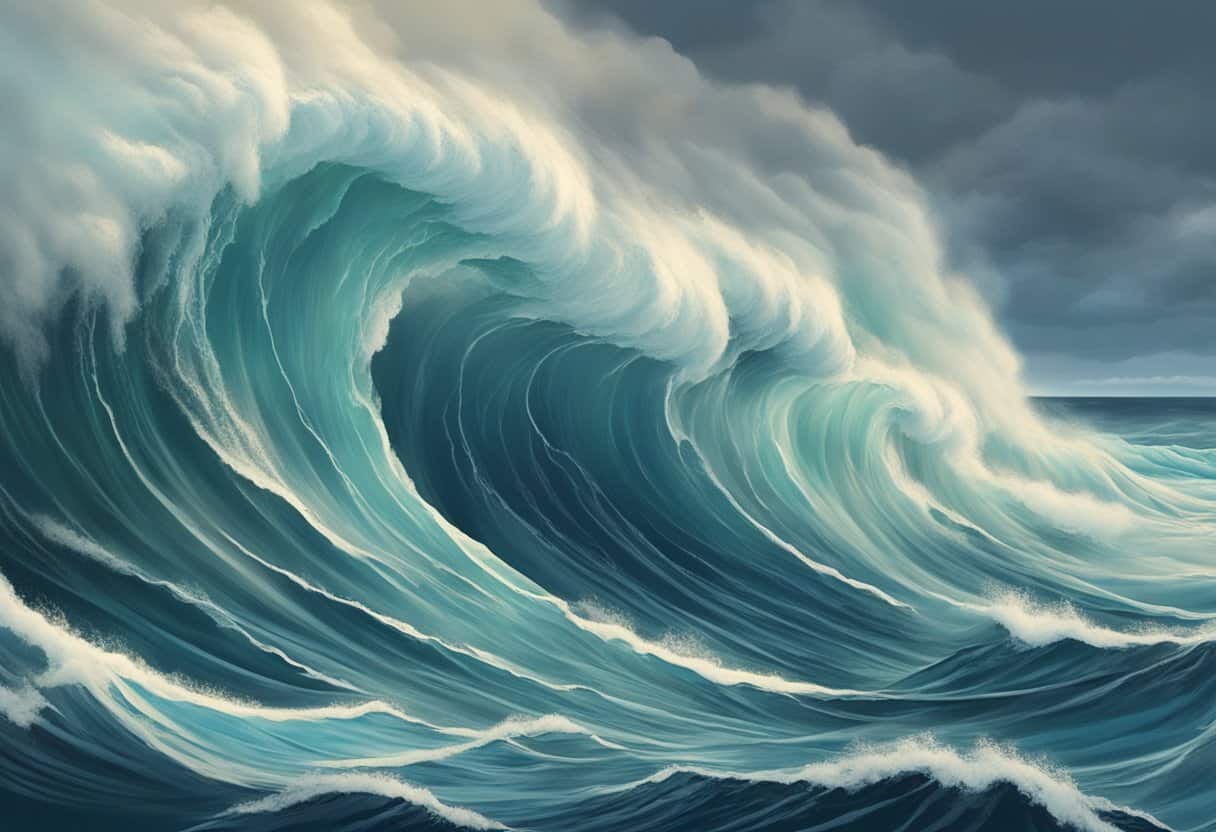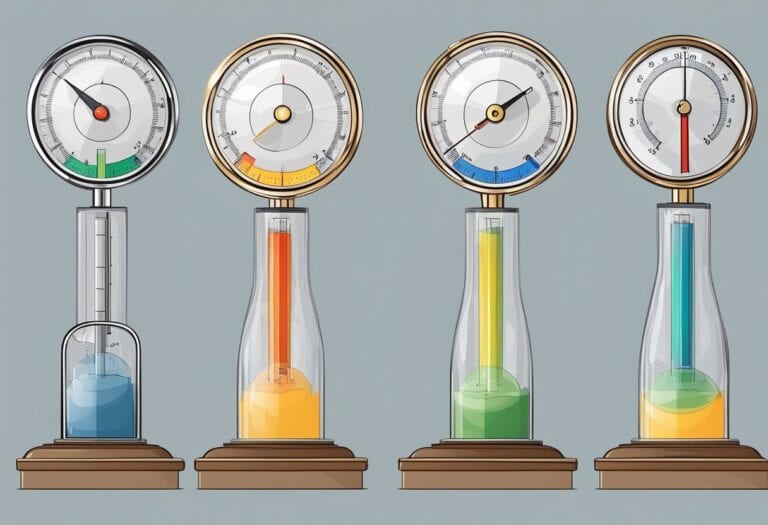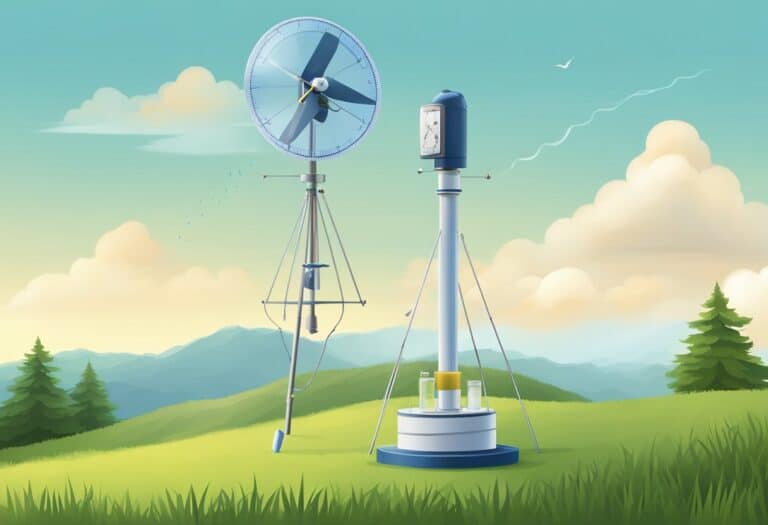The Roaring Forties refer to a belt of strong westerly winds found between the latitudes of 40 and 50 degrees in the Southern Hemisphere.
These winds are renowned for their persistent strength and arise due to the differential heating of the Earth’s surface, which generates pressure gradients that drive the westerly flow of air. As there are minimal landmasses to disrupt the airflow at these latitudes in the Southern Hemisphere, the winds can maintain their strength over vast distances across the ocean.
These powerful winds are not just meteorological phenomena; they have historical significance as well. They were crucial in the age of sail, helping ships to quickly cross the vast oceans, and have continued to influence maritime activities to this day.
The Roaring Forties also play a pivotal role in the Earth’s climate, affecting ocean currents and weather patterns, and they create unique ecological environments supporting diverse marine life.
The Roaring Forties are powerful westerly winds between the 40 and 50-degree latitudes in the Southern Hemisphere, known for their strength and persistence. They result from differential heating of the Earth and the absence of significant landmasses at these latitudes, allowing uninterrupted flow.
Geographic and Atmospheric Fundamentals
Understanding the Roaring Forties requires a grasp of the Earth’s global wind patterns, which are significantly influenced by the planet’s rotation, shape, and latitude variations. These winds are not only pivotal in terms of climate and weather patterns but also play a key role in maritime navigation, especially in the Southern Hemisphere.
Global Wind Patterns
Your planet, Earth, is a rotating sphere, and due to this rotation, along with its spherical shape, wind patterns are formulated in specific belts around the planet. Called the global circulation cells, these patterns include the trade winds, westerlies, and polar easterlies. These winds are largely determined by the Earth’s rotation and the distribution of heat across its surface, leading to areas of high and low pressure. Latitude plays a critical role in this process, as the angle at which sunlight hits the Earth changes, affecting the temperature and pressure of the air. This results in alternating bands of prevailing winds at various latitudes across both the Northern and Southern Hemisphere.
Roaring Forties Specifics
The Roaring Forties are a zone of westerly winds found approximately between 40 and 50 degrees latitude in the Southern Hemisphere. This band of winds is generated by the difference in pressure between the high-pressure subtropical ridge and the low-pressure systems around the poles. The absence of large landmasses at these latitudes in the Southern Hemisphere means the winds whip around the globe with little to interrupt them. The Earth’s rotation contributes to the fierceness of these winds due to the Coriolis effect, which curves the path of the winds from a straight line to a more lateral flow. These relentless westerly winds influence the global circulation cells and are a key component in the Southern Hemisphere’s wind patterns.
Historical Significance
Your understanding of the Roaring Forties is not complete without recognizing their historical significance, which carves through the narratives of both sailors and nations. Their impact stretches from the Age of Sail to contemporary maritime endeavors, influencing exploration and navigation around the perilous waters of the Southern Ocean.
Age of Sail Exploration
During the Age of Sail, the Roaring Forties were crucial for sailors to expedite their voyages. Harness the Roaring Forties and you would find a swift passage between Europe and the East Indies; fail to do so could mean disaster. Navigating around Cape Horn was a formidable challenge, yet it was often preferred over the Cape of Good Hope to reach certain destinations, including New Zealand and Tasmania. Consider the Brouwer Route, a path discovered by Dutch mariners that optimized the westerlies near the 40th parallel south for a quicker journey to the Dutch East Indies.
Modern Nautical Challenges
Fast forward to the present, and the Roaring Forties still present a formidable challenge for yachtsmen and adventurers. The Sunday Times Golden Globe Race, for instance, saw sailors like Donald Crowhurst attempt to circumnavigate the globe single-handedly, with the treacherous conditions of the Roaring Forties as one of their critical obstacles. Christian de Chalonge’s film adaptation, “Les Quarantièmes rugissants” (The Roaring Forties), pays homage to the sheer power and challenge they represent. Today’s sailors, equipped with sophisticated technologies, continue to respect the unpredictable nature of these winds as they navigate near the South Pole, Australia, and Tasmania, underscoring their timeless significance in maritime history.
Climatic Impact and Marine Life

The Roaring Forties are a key driver in shaping both the climate and marine ecosystems, especially through the influence of powerful winds on air currents and ocean currents. These westerly winds affect weather patterns, oceanic conditions, and marine life from the west coast of Tasmania to the broader Pacific and Indian Oceans.
Wind Influence on Climate
The Roaring Forties are characterized by gale-force winds that originate around Southern Australia’s latitude of 40 degrees south and blow uninterrupted across the Indian and Pacific Oceans to the West Coast of Tasmania. These persistent winds drive warm air and air currents eastward, impacting your local climate through increased rain and storm frequency. The high energy and consistency of these winds contribute to your climate’s dynamism, at times working as a global conveyor belt distributing heat around the planet.
Role in Oceanic Ecosystems
The power of the Roaring Forties extends beneath the waves, influencing ocean currents which, in turn, sustain rich marine life. The robust gale-force winds are profoundly connected with ocean currents, helping to churn the waters which brings nutrients up from the deep. This upwelling is crucial for marine ecosystems as it supports the growth of plankton, the foundation of the ocean food web. As a result, areas impacted by these prevailing winds, such as the Southern Ocean, are thriving habitats for diverse marine species, ensuring that the natural cycle of marine life endures despite the sometimes harsh climatic conditions brought about by these winds.
Cultural and Media References
When you explore the world of arts and media, you’ll find that the Roaring Forties have served as a backdrop in various creative works. Often depicted as a period of economic prosperity and cultural flourish right after World War I, this era has captured the imagination of numerous storytellers and artists.
In the realm of film, a French filmmaker might use the turbulent yet vibrant atmosphere of the Roaring Forties as a rich canvas for a drama movie. The era’s distinct fashion, jazz music, and the rise of cinema itself present an alluring aesthetic for filmmakers who wish to transport viewers back in time.
| Media Type | Typical Depictions |
|---|---|
| Films | Flapper culture, economic boom, jazz bands |
| Literature | Speakeasies, the Lost Generation’s disillusionment |
| Television | The rise of the silver screen, prohibition |
A drama movie set in this time might focus on the juxtaposition of the era’s opulent lifestyles against the underlying social tensions that preceded the Great Depression. Stark contrasts such as these offer dramatic tension and narrative depth, drawing you into the story.
When cultural references to the Roaring Forties surface in modern media, they often highlight technological advancements and social changes that shaped today’s cultural landscape. These references might also be found in contemporary works as either a fond nostalgia or a cautionary tale of excess and the subsequent fallout.
In your consumption of modern media, you might notice allusions to this iconic decade across various genres. From the costumes to the dialogue, each element serves as a testament to the enduring influence of the Roaring Forties on today’s cultural fabric.
Frequently Asked Questions
The Roaring Forties are a band of strong westerly winds found in the Southern Hemisphere between the latitudes of 40 and 50 degrees. This phenomenon impacts the climate, ocean currents, and navigation, and has unique characteristics that have led to the vivid names describing these winds.
Why is the wind belt between 40 and 50 degrees latitude known for strong westerly winds?
You will find that the absence of large landmasses at these latitudes allows the winds to move with minimal geographic interruption. Due to the earth’s rotation and the temperature differences between the equator and the poles, these winds are consistently strong and westerly.
How do the Roaring Forties influence the climate and weather patterns in southern Australia?
The Roaring Forties significantly contribute to southern Australia’s weather by bringing moist air that results in rainfall, particularly on the western coast. They also play a part in tempering the overall climate of the region.
What are the key characteristics of the ocean currents within the Roaring Forties zone?
Within the Roaring Forties, ocean currents are driven mainly by these persistent westerly winds, leading to the development of large, swirling water bodies known as gyres. These currents are crucial for global heat distribution and marine nutrient transport.
In what ways do the Roaring Forties affect maritime navigation and sailing?
The intense winds of the Roaring Forties create challenging conditions for sailors, with high seas and strong currents. Mariners take advantage of these winds to expedite travel from west to east, although these routes can be perilous.
How do the names ‘Roaring Forties’, ‘Furious Fifties’, and ‘Screaming Sixties’ reflect the conditions of their respective latitudes?
These descriptive names reflect the escalating wind speeds and tumultuous sea conditions experienced, with ‘Roaring Forties’ indicating strong conditions which grow even more intense with the ‘Furious Fifties’ and ‘Screaming Sixties’ at higher latitudes.
What role do the Roaring Forties play in the global atmospheric circulation system?
The Roaring Forties are an integral aspect of the global atmospheric circulation, contributing to the transfer of heat and moisture around the planet. They help maintain the balance of the climate system by distributing energy from the equatorial regions towards the poles.







